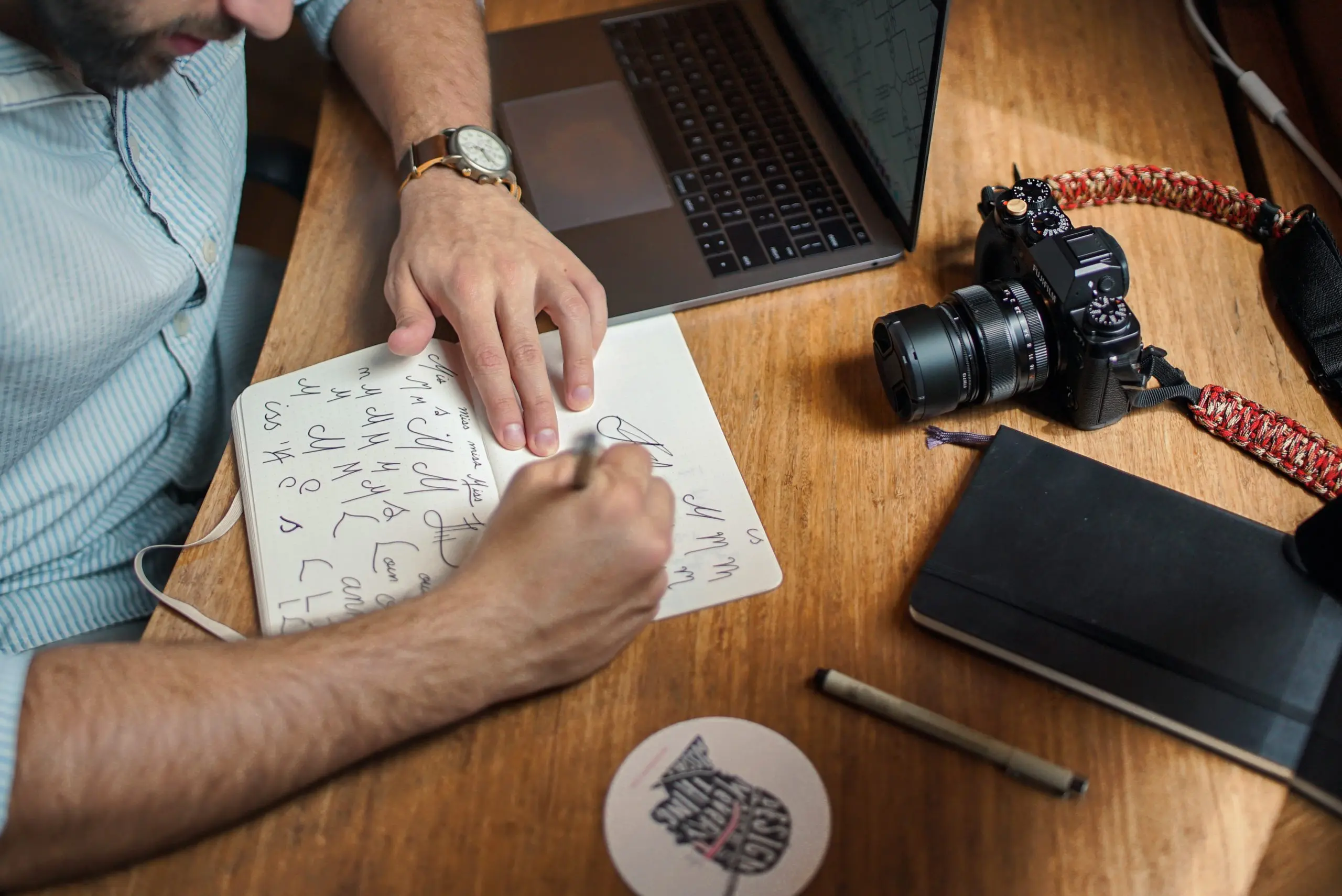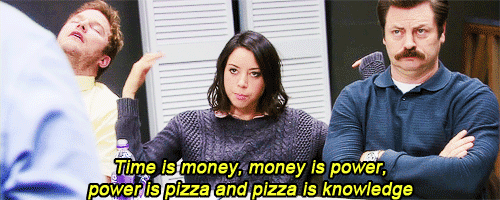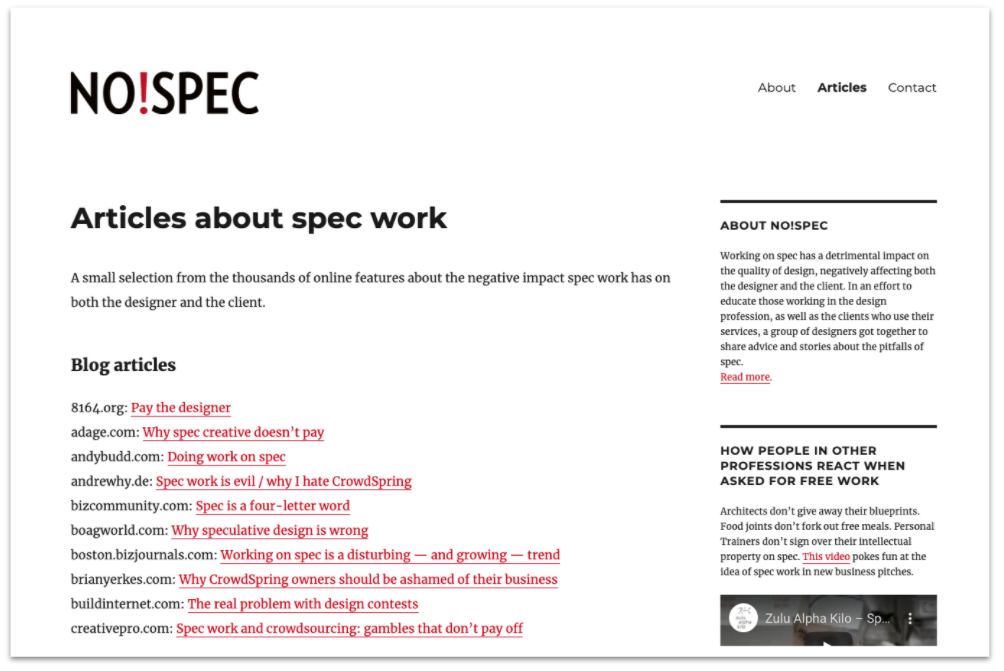What works better than speculative design?
The speculative (spec) design debate has been going on for years now amongst agencies and freelance designers. As a rule, we’re against producing speculative design for a myriad of reasons. But rather than using this blog as a cathartic excuse to rant – we have some suggestions of what we think works better for the end user, the client and the agency.
What is speculative design?
Speculative design is pre-project work that a client asks for, before an agency has been selected as their chosen partner, often coinciding with delivering a pitch. Although the spec work we’re referring to is designing for digital tools such as websites and apps – speculative design actually predates web design.
A lot of early speculative design was based in campaign and advertising industries. The pitch process pretty much became a beauty pageant – with clients choosing the aesthetics they liked the best. It’s an old school agency selection method, but has somehow persisted.
Agencies sell creative work. Asking them to do intensive creative work for a pitch is asking them to work for free. This is obviously a bad thing for agencies, but the risks stretch over to client-side and even more importantly, the user’s side too.



Spec design ≠ user-centred design
The way that agencies survive and prosper in the spec design world is by building the cost of speculative design into the project itself (which isn’t good for clients) or building the cost of all the speculative design they have to do for projects into their day rates (which isn’t good for anyone).
It gets worse..
Not only does spec design add costs to a project, it also incentivises agencies to get better at delivering it, because this unavoidable requirement becomes the most important type of design they do. This means that agencies devote time, talent and headspace to getting better at the type of design that wins pitches, where the target audience is the client rather than the end user.
This works fine in the very limited circumstances when the client is the audience, and is perfectly well informed about the audience’s needs (think old school Mad Men pitches where the client is commissioning a vanity ad).
But when it comes to producing design that works for users, selecting an agency based on a panel’s gut feel on the design is a roll of the dice. And working in the charity sector, that’s a roll of the dice it’s simply not ethical to take.
If we had a penny for every time an agency talks about the importance of user-centred design we’d be able to deliver all the free speculative design in the world. In fact, we’re one of those agencies. Users are at the heart of all that we design and build because working with charities, we’re committed to delivering unparalleled experiences that solve complex and often life-changing challenges.
Speculative design means that we’re designing for the charity stakeholders, rather than the parent of a child with complex health needs, for example. This makes the designs firstly, irrelevant and secondly, misaligned with our mission as an agency.
Time is money!
From the charity partners we work with, to our designers, everyone’s time is valuable – and we believe that the time dedicated to spec work could be better used elsewhere..

With all of this wasted time, you’re doing your own project a disservice. Your project and the people who will benefit from it deserve understanding. They deserve the time and effort put into researching and workshopping to ensure that what is being made is appropriate and usable, by the right group of people.
The anti-spec brigade
Since the mid-late 2000s, online collective No!spec has brought anti-spec sentiments to the mainstream and consolidated them in one movement. The No!Spec community frames the process as terrible, and inappropriate.

While we admit, it can be cathartic, empowering, and kind of fun to rant about the pitfalls of speculative design, the anti-spec movement left clients in a difficult position. Certain clients may be fairly new to web design and are possibly unaware of the more useful, ethical ways to select a design team.
We’d rather focus on better replacement processes, instead of just broadcasting snarky dismissal of an understandable client instinct.
What we propose instead
Clients are absolutely right to speak to a range of agencies before selecting who to work with, to gather as much information as they can about a potential partner’s experience and capability for the project.
Spec work is hard, and takes a big investment of effort. At Reason, we’re well up for engaging and making the effort, but what if we could produce something of more value to the client?
Here’s what we think works better than speculative design and please note, all of this is from positive experiences with previous partners:
1. Removing the pitch and spec design process, and running a workshop about how we hope to collaborate.
This wouldn’t have to be specific to the first stage of the project, but an initial workshop is a good way to show our process and what we do, helping the client make an informed decision. There are obviously pros and cons for that, and the question of whether it’s 100% representative.
But we still feel this process works because the client is heavily involved, as opposed to spec design, which is full of assumptions on both sides. A workshop allows us to take you through some of our process in person – and you get a feel for what it’s like to work with us.

2. Guerrilla research
Sometimes, before pitches, our team has gone out and met with relevant users for insight and feedback. We use this feedback in pitches to give a more in-depth, human-centred proposition that is relevant to the end user and the client’s goals.
Similarly, running ideation or research sessions based on actual user information and drawing upon what we already know about the cause area can produce far more relevant preliminary ideas for the client.
3. Presenting relevant aspects of our portfolio
Instead of investing precious time into making a nice-looking thing that might be relevant to end users, we could show you a nice-looking thing that we’ve already made, that we know was relevant to end users.
We could talk you through the stages, the problem, the sketching, and tell the whole narrative of a real life digital tool that relates to your vision. Focussing not just on the final visuals, we could explain the project from start to finish, the challenges encountered and what we learned that we’ll take into your project.
Trust the process
We see design as a process, and in all honesty, we work better with clients who share this philosophy. This process starts with understanding your goals and is built through understanding and building empathy with your users. It then comes to fruition after a period of collaboration.
We’ve got enough knowledge and talent to produce speculative designs with the best of them, but also enough experience to know that our best relationships start with being upfront about things like this.
We produce the best human-centred design work when we have spent time getting to understand your organisation, your challenges, your goals, and the people who you strive to help. The key to a successful for-good project is understanding. And we believe that using an alternative process other than spec design will allow you to understand us better, too.
